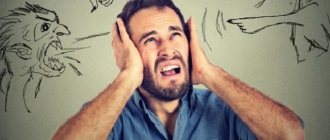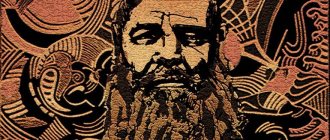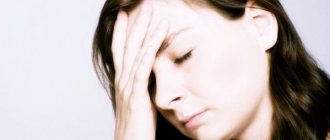Sleeping beauty syndrome
This sleep disorder does not have a fairy tale ending. Kleine-Levin syndrome is a rare neurological disorder associated with excessive sleep, strange behavior and confusion. About 70 percent of people who suffer from this syndrome are teenage boys. The syndrome occurs in waves when the person sleeps most of the day and night, but between such episodes he appears completely healthy. An exacerbation of the disease can last for several days, weeks or even months, during which the person feels drowsy. When the patient wakes up, he experiences confusion, disorientation and apathy. In some cases, uninhibited sexual desire occurs.
Although the cause of the disorder is unknown, some scientists believe it occurs due to dysfunction of the hypothalamus, which helps regulate sleep and body temperature. To date, there is no treatment.
Chinese Chen Haigang has not been sick for 30 years: he repeats the movements of a monkey
Nothing worked to remove the greasy stain on the carpet, my dad recommended WD-40
A space tower will be built in Moscow: the height of the building will be 248 meters
How to treat?
Usually, the appearance of fantastic visual images does not cause concern for most people, so they do not consult a medical specialist. Some believe that such visions are a certain sign of higher powers, so they try to decipher and understand the special message.
In this case, it is necessary to urgently consult a specialist, since such hallucinations are not caused by headaches or chronic fatigue, but by mental disorders.
Experts recommend that you first try to get rid of such visions on your own. To do this, you need to take simple but effective measures:
- review your daily routine and allocate more time for healthy sleep and rest;
- to refuse from bad habits;
- Before using medications, familiarize yourself with the side effects;
- follow a certain daily routine;
- exercise;
- walk more in the fresh air.
It should also be understood that excessive consumption of even healthy drinks and foods can lead to hallucinations, so it is not recommended to get carried away with nutritional supplements and drink large amounts of black coffee and strong tea.
If the above steps do not help you get rid of vivid visions, you should contact a professional who specializes in solving sleep problems. Before treatment, the doctor must prescribe a special examination, since the appearance of non-existent visual images can be caused by serious diseases.
If a person constantly feels drowsy during daylight hours, the visions may be caused by narcolepsy, in which case drug treatment is necessary.
When contacting a doctor with this problem, you must inform him about all chronic diseases, health problems, and medications you are taking.
Sometimes additional research is required for an accurate diagnosis. Only after this will the doctor be able to prescribe the optimal treatment.
Night terrors
The horrors you see in your dreams can be very different. For some people, this is a murderer who is chasing them with an axe; for others, their night terrors may see themselves naked in a public place. The common thing is that at some point a person suddenly wakes up. However, when night terrors go beyond occasional irritation, you may develop a sleep disorder. People who suffer from night terrors often wake up in a cold sweat and with vivid memories of the nightmare. In such cases, they may even be afraid to go to bed.
Stress and sleep deprivation are common problems in this disorder. In severe cases, counseling or sedatives may be needed to calm the anxiety underlying the bad dreams. However, to banish night terrors, most people will only need to relax and go to bed on time.
What is a waking dream
Hypnagogic illusions are short-term visions that bother a person when falling asleep or waking up.
Night images that occur before sleep are called hypnopomic, and after it - hypnapomic. In the medical literature, they are united by one concept - hypnagogic hallucinations. The phenomenon is difficult to identify; the patient can easily confuse it with other types of perceptual disorders. An illusion differs from a dream in that the patient perceives everything he sees and hears from the outside, without being a participant. Patients often describe the resulting condition as a “magic crystal effect.”
Children are most susceptible to hypnagogic visions; in adults, the phenomenon is much less common. There are cases in which patients encounter similar illusions throughout their lives. They are irregular; between periods of exacerbation there is often a long period of time, up to several years.
The events that take place are always very clear. The patient can describe in great detail what he saw. They don't seem blurry like in a dream. Typically, imaginary events are short scenes and faces of people, sometimes strangers, against a background of bright light or flash.
The phenomenon of a waking dream is well described by Jack London in the novel Straitjacket. Agronomy professor Darrel Standing, sentenced to death, is subjected to regular torture in a straitjacket, with the help of which he eventually learns to travel through time and the world in a transformation between a sleepy state and reality.
There are many practitioners who try to practice this state. A waking dream is the line between reality and sleep, when the body seems to be already asleep, but the brain still gives all the signals characteristic of wakefulness. The state in a dream and in reality differs in that in a dream the brain is already completely asleep. How to induce a waking dream?
To avoid headaches after waking up, you need to learn some safety rules:
- do not set an alarm clock with a sharp sound;
- It’s better to be woken up by soft, gradually increasing volume music or a friend with a light touch;
- for the first time try to fall into a waking sleep for 2 minutes and then gradually increase the time of waking sleep to half an hour;
- Try not to let anything bother you during this time.
Sleepwalking
About 15 percent of adults sometimes get up and start walking around the house in their sleep. This disorder is more common in children. No one knows what causes some people to wander at night, but stress and sleep disturbances are often key factors. Genetics also plays a role: close relatives of sleepwalkers are 10 times more likely to develop the disorder than the general population.
Not original, but romantic: the most popular places for marriage proposals
Budget transformation of an old cabinet: photos before and after pasting
Christopher Nolan's 'Tenet' Pushed to August Due to Spike in COVID-19 Cases
You are unlikely to see a sleepwalker walking around the house with his arms outstretched in front of him. Most of them are able to move around, open doors and even move furniture with ease. But although such actions do not harm a person, sleepwalking itself can be very dangerous. One study, published in 2003 in the journal Molecular Psychiatry, found that 19 percent of adult sleepwalkers were injured during their nighttime excursions. The biggest danger is falling, so if you have a sleepwalker in your home, experts recommend hiding electrical wires and keeping the patient away from the stairs.
Causes
Daytime and nighttime auditory hallucinations reflect a violation of perception; the causes of such disorders are associated with damage to the brain substance. The main reason is exogenous (produced by the external environment) psychoses. Common causes of auditory hallucinations that appear during the day or during sleep:
- Organic damage to the brain substance (hypoxic-ischemic processes, cerebral infarction, impaired cerebral blood flow, including strokes).
- Destructive and degenerative processes affecting brain tissue (atrophy, necrosis of the medulla, Alzheimer's and Parkinson's diseases).
- Autoimmune diseases (multiple sclerosis).
- Suffered injuries in the head area.
- Tumors localized in nervous tissue.
- Intoxication (chronic, acute).
- Mental disorders (schizophrenia, psychosis, manic-depressive, schizotypal, schizoaffective disorder).
Among the factors that can provoke the appearance of imaginary sound phenomena are the abuse of alcoholic beverages, the use of psychoactive substances (drugs, pharmaceuticals - Psilocybin, Mescaline, antidepressants, nootropic drugs, adaptogens). Often the causes of vocal hallucinations before or after sleep are the following factors:
- Physical and mental fatigue.
- Lack of sleep and proper rest.
- Lack of nutrients - nutrients and vitamins necessary for the body, often due to intentional (diet) or unintentional starvation.
Noise in the head when falling asleep occurs due to lack of sleep. Perception disorders in a healthy person occur due to insomnia, fever, or overheating of the body (heat stroke). Audible stimuli, resulting from a chronic disorder or prolonged sleep deprivation, reflect the patient's borderline state between dream and reality.
In this case, the line between dreams and real images is blurred. Separately, there are psychogenic forms provoked by psychotraumatic situations - attack, loss of loved ones, participation in hostilities, chronic stress and other psycho-emotional shocks.
Exploding heads syndrome
This disorder occurs during the deep sleep phase, when a person suddenly wakes up, startled by a sudden, loud noise. Its range ranges from crashing plates to explosions. To the person who hears them, it seems that they occur either very close to the head, or inside the skull itself. In this case, the person does not feel pain. Doctors don't know what causes exploding head syndrome, and it hasn't been shown to cause any serious illness.
Such a handy pizza stone, but if you wash it incorrectly it will get ruined.
Mom was able to admire the bouquet for only half an hour: her little son worked on it
The couple converted an old garden shed in the courtyard into a stylish pub in 3 days: photo
Treatment
The choice of treatment method will depend on the underlying cause of the disease, as well as the age of the patient.
If organic changes are detected in the organs of the central nervous system or blood vessels, treatment can be surgical or medicinal.
In adults
The frequency of detection of organic pathology, as well as mental illnesses, is higher in adults. Also, this category of people is more susceptible to stress.
If the cause of the disease is nervous overstrain, preference is given to medications that have an antidepressant and calming effect.
As a result of treatment, the body's response to stress decreases, sleep improves with an increase in its duration, anxiety and nervous agitation decrease. These medications are taken under strict medical supervision.
It is important for the doctor to regularly assess the patient’s well-being and, if necessary, change the drug or completely stop it.
In children
Treatment of hypnagogic hallucinations in children must be carried out using non-drug methods. This is associated with an increased risk of overdose and side effects, as well as withdrawal symptoms.
The child is consulted with a psychotherapist or psychologist, who, during a conversation, identifies the main cause of such disorders. In some cases, a course of treatment is required.
Sleepy hallucinations
We're used to seeing strange things in our dreams, but what if we're awake at the time? So-called hypnagogic hallucinations occur during the transition from wakefulness to sleep, or vice versa. People report hearing voices, experiencing phantom sensations, and seeing a person or strange object in their room. People often see insects or animals crawling on walls.
When to see a doctor
In most cases, there is no need to see a doctor about hypnagogic hallucinations, especially if they are episodic and do not interfere with normal functioning. Specialist help is required only when the disorder is accompanied by additional symptoms or occurs very frequently.
Patients are first advised to consult a therapist. He can additionally refer you to a psychiatrist, neurologist, narcologist, or somnologist.
Nightmares
Nightmares can affect not only the person who sees them, but also the people who are close to him. Unlike night terrors, which occur during REM sleep, nightmares occur during slow sleep, usually at the beginning of the night. They are most common in children. During a nightmare, a person may feel feverish and may suddenly sit upright with his eyes open, although he is not actually aware of what is happening around him. The person often screams or cries, and it is impossible to wake him up and console him. In some cases, nightmares are mixed with sleepwalking. After 10 or 15 minutes, the person usually falls asleep again. Most remember nothing about these episodes the next morning.
“The decision is mine”: Christina Asmus named the reason for her divorce from Kharlamov
The Arctic is on fire: Siberian heat worries scientists
Is it worth the risk? There are no cases in fitness centers in Norway, but 112 in Korea
The cause of nightmares is a mystery, but irregular sleep, fever and stress can trigger them. Fortunately, nightmares usually disappear as the child grows up.
How to distinguish pathology from normality?
Pseudohallucinations, which include unreal images that arise while falling asleep or waking up, are devoid of signs of objective reality and concreteness. Auditory images are very different from normal speech. What is seen and heard is not perceived by a person as an undoubted reality and has no connection to the real situation in the room in which he is located.
If the voice heard during a hallucination is clear and at the same time perceived as absolutely real, and visual images arise in relation to the situation (a person sees something in his real room), then this is a sign of true hallucinations that require treatment.
True hallucinations are characterized by the fact that the perceived object or action is located in objective mental space. Thus, patients see a certain creature in the room in which they are currently located, and the room looks exactly as it does in reality (with the same glass on the nightstand that was just placed), so it is perceived as real. At the same time, the patient interacts with the image that has arisen: shakes off the insect, closes his ears, listens, and tries to escape.
Reasons for the appearance of the image
Vivid images when falling asleep most often appear in children aged five, but can also occur in adults.
This is not considered a pathology, and therefore does not require drug therapy.
But hypnagogic hallucinations are often a harbinger of the development of delirium tremens or other intoxicating psychosis.
Hypnagogic hallucinations are caused by:
anxiety;- lack of sleep;
- alcohol, drugs;
- taking psychotropic drugs (antidepressants, tranquilizers, anticonvulsants, psychostimulants);
- stress;
- depression;
- disturbance of emotional state.
The Guinness Book of Records includes a young man who did not sleep for 11 days. The first two days he felt tired and irritable; on the seventh, hallucinations and paranoia, tremors, and signs of Alzheimer's disease appeared. Hallucinations can also occur in a person with narcolepsy or during an epileptic seizure. Rarely, the cause is a disorder of the brain stem.
A person can see non-existent images under hypnosis, these are hypnotic hallucinations. Knowledge can arise spontaneously or be suggested. A person sees them during hypnotic sleep, and he can have his eyes open or closed.
Sleep paralysis and hallucinations
Some people may experience sleep paralysis (sleep paralysis) when they wake up. It is characterized by the fact that a person wakes up and correctly perceives reality and his own body, but is not able to make a voluntary movement for some time (up to two minutes).
The cause of sleep paralysis is considered to be a delay in the removal of blocking of motor commands in the part of the brain that is responsible for behavior and motor activity, that is, consciousness woke up, and the system responsible for controlling movements overslept. This condition is not a disease and occurs more often in young people aged 12-30 years. Sleep paralysis and hallucinations at night occur under the influence of the same factors, so they are often observed simultaneously.
Sleep paralysis is accompanied by fear (the person thinks he is in a lethargic sleep, is afraid of dying, may hear voices), hallucinations, suffocation, rapid heartbeat, and disorientation. Much less often, sleep paralysis occurs before falling asleep.
The condition is the opposite of somnambulism, when muscle activity is not blocked. Physiologically, it is similar to the natural paralysis characteristic of REM sleep. Its biological significance will prevent a person from being injured. Normally, the brain “falls asleep” a few moments before paralysis, but due to the disorder, the opposite happens.
Hypnagogic hallucinations in preschoolers
In preschool children, hallucinations during sleep can act as part of the normal development of the psyche. Hallucinations often occur before going to bed at night. The psyche is still immature, so the child cannot distinguish a hallucination from reality.
Fantastic images that arise during the transition to sleep or upon awakening can frighten the child and cause disturbances: nightmares, nocturnal enuresis, anxiety, panic. Children more often than adults see frightening images (monsters, animated characters from fairy tales, films, dead ones). Then the child, who begins to be tormented by a terrible vision, refuses to go to bed, asks his parents to sleep, or demands to leave the light on.
Hallucinations during sleep in children, as a rule, occur due to an unfavorable family atmosphere, psychological trauma, and emotional overload. Often the reason for the appearance of images is watching cartoons with fictional villains before going to bed.
Parents should ask their child about the causes of anxiety and fear and try to eliminate them. If the objective reasons could not be determined, and hypnagogic hallucinations began to cause harm to mental and physical health, then you should consult a psychotherapist or psychologist. In just a few sessions, the specialist will help the child learn to cope with his own fears and distinguish reality from fiction, and nightmares will stop tormenting the child.
Do I need treatment if hallucinations occur?
Hypnagogic hallucinations are not a symptom of a mental disorder and do not require medical intervention.
But it is quite difficult for a non-specialist to distinguish one type of disorder from another, so if images begin to appear frequently and cause discomfort, it is recommended to consult a psychotherapist. For treatment, psychotherapeutic techniques are used, the purpose of which is to eliminate the underlying disorder that causes hallucinations. Antipsychotic medications may also be prescribed.
In order to reduce the frequency of hypnagogic visions, it is recommended to refrain from drinking alcohol and other hallucinogens, monitor stress levels, maintain a healthy lifestyle and a sleep-wake schedule.
Sleep paralysis
During the rapid eye movement phase, the muscles of the body become motionless. This temporary paralysis keeps us from acting during sleep so that we cannot harm ourselves. Sometimes, however, paralysis persists even after the person wakes up. You know you're awake and want to start moving, but you can't. To make matters worse, sleep paralysis often coincides with hallucinations: people usually report feeling someone's presence as well as suffocation. Even today, some researchers suspect that stories of alien abduction may be explained by sleep paralysis.
Conduct disorder during REM phase
If sleep paralysis is an example of immobility, then the so-called REM behavior disorder is too much activity during sleep. Sometimes the brain sends the wrong signals to the body and people act out during sleep. They may scream, fight, or even get out of bed and run. After waking up, they usually remember their dreams, but forget what they did. Given the severity of these impulses, many of them end in injury. This disorder occurs most often in older people and can also be a symptom of Parkinson's disease, a degenerative neurological disorder.
Nocturnal eating disorder
Sure, you can have the willpower to deny yourself sweets throughout the day, but how do you control it when you're sleeping? People who have a nocturnal eating disorder empty the refrigerator while they sleep and have little memory of the event the next morning. Some people may injure themselves while cutting food or cooking it on a hot stove. Others eat raw ingredients, such as frozen foods or regular butter.
The disorder is poorly understood, but, like sleepwalking, it manifests itself during the slow-wave sleep phase. Drugs that increase dopamine levels may help stop unconscious nighttime snacking, doctors say.
Sexual insomnia
This disorder was first described in 1996 during a case study. Sexual insomnia syndromes can range from annoying (loud sexual moaning) to dangerous (aggressive masturbation) or even criminal (sexual assault or rape). Scientists suggest that sleep deprivation, stress, alcohol, drugs and physical contact with a partner in bed may play a role in the occurrence of this disorder. But no one knows why some people respond to these triggers with sexual behavior.
Insomnia
If previous disorders have caused you to reconsider your once positive attitude towards sleep, think again. Insomnia, the inability to fall asleep or stay asleep, can cause irritability and lack of concentration during the day, and long-term sleep deprivation can be downright dangerous. Lack of sleep is linked to obesity, high blood pressure and heart attacks, among other unpleasant symptoms. In addition, driving a car in a sleep-deprived state leads to accidents.
The good news is that most of the disorders on this list can be cured, and even if you have one of them, you should not rush to classify yourself as crazy. Often people believe that there must be a psychological reason for these events. They think there must be some kind of Freudian answer to solve these problems. But modern science does not support this opinion and believes that sleep disorders arise for physiological reasons.
Found a violation? Report content
Types and features
Hallucinations are divided into categories and grouped according to general criteria. There are two types of illusions:
- 1. True hallucinations - they are characterized by the absence of a stimulating factor. The formation of an imaginary event is not influenced by external stimuli. The patient perceives what is happening uncritically and calmly, and the plot interacts with the surrounding reality.
- 2. Pseudohallucinations are of an alarming nature. These visions are not as vivid as in the previous case, and do not occur outside, but inside the patient. These could be insects under the skin or voices in the head that have a subjective coloring. What is happening around is perceived critically, the patient is haunted by a feeling of unreality. The emerging pictures are intrusive and do not depend on the person’s desires or thoughts. Usually such visions are accusing in nature.
On the border between wakefulness and sleep, various images arise. Depending on what the patient imagines and how he relates to what is visible, several types of hypnagogic imaginary illusions are distinguished.
- True. They are distinguished by the absence of a provoking factor. The pictures that appear cause anxiety and are perceived calmly and unemotionally. Hallucinations are a continuation of real phenomena or do not introduce fear.
- Pseudohallucinations have an alarming character. These visions are bright and realistic. The patient notes an obsessive desire to close or hide from emerging images. Unlike true ones, pseudohallucinations “capture” the brain, causing a feeling of fear, inevitability and blame. A striking example of pseudo-illusions are goosebumps or insects running all over the body and head, voices, screaming and tinnitus. It is important to note that all these visions are not realistic and occur in people with mental disorders that require inpatient treatment.
Another classification allows you to determine the type of unreal visions. The classification depends on which sense organ is involved in the process.
Visual hallucinations. The most common group of illusions before bedtime. In a borderline state, bright flashes and full-fledged plots are seen. Hypnagogic mirages can easily be mistaken for a “daydream.”
Tactile illusions. A group similar to visual visions, the difference lies in the clear sensation of touching the body, involving the sleeper himself in the plot. Children report a feeling of weightlessness or flight. Frequent phenomena of this nature are a reason to pay more attention to the younger generation.
Olfactory illusions. The process involves the ability to identify odors. With this pathology, a person notices obvious odors of excrement, rot or stale meat. In fact, the surrounding air does not contain “odorous” impurities, and this only seems to the patient. They are often combined with taste sensations, causing appetite or, conversely, a persistent aversion to any food derivatives.
Functional sensations. Periodic twitching of the limbs, which can be felt in reality. Frequently occurring movements are combined with dreams, which suddenly occur in the first phase of sleep.
Vestibular sensations when falling asleep manifest themselves in the form of flight, rotation and any other movement, which can cause dizziness. Vestibular illusions are the third most common.
Visceral hypnagogic images are a pathological perception of reality, characteristic of persons with a disorder of the mental system. A person feels the presence of foreign objects, alien creatures or moving living parasites in the body.
Auditory hallucinations are a wide group of illusions before falling asleep, which are characterized by pathological and physiological causes. A clear example is the loss of a loved one, whose voice is heard in the first phase of dreams. The pathological nature of auditory illusions is inherent in people with mental development disorders. Auditory mirages are divided into 3 types:
- threaten a person, his family and close people, which causes fear, but not panic, so there are no active actions on the part of the patient;
- imperative or commanding - voices tell you to do something, which is one of the signs of acute schizophrenia;
- contrasting opposites: one part encourages the patient to act, the other stops.










